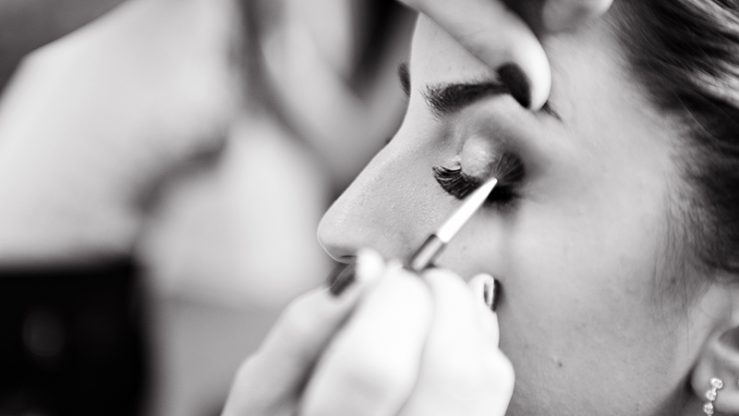Cosmetics – pretty on the outside, ugly on the inside
Everywhere we go we are bombarded with advertisements encouraging us to improve our looks with makeup and personal care products. If it’s not a shampoo that will give extra volume to your hair, it’s a skin lotion that will make your skin velvety smooth, a lip stick that won’t smudge or a concealer that will hide all your blemishes.
But beneath the pretty surface, cosmetics and personal care products hide an ugly secret.
Many of these products contain harmful chemicals, and the fact that we apply them directly onto our body makes it even worse. Behind the complicated chemical names found on the ingredients lists are substances that cause cancer, disrupt hormones, affect the reproductive system, damage the nervous system and have negative impacts on brain development – to name a few adverse health effects.
One of these substance groups are the ever-present PFAS. These “forever chemicals” are found in a wide variety of personal care products such as sunscreens, foundations, concealers, eyeliners, shaving creams and hairspray.
Apart from the fact that they do not break down in nature, PFAS can also cause cancer, affect the immune system and disrupt hormones.
Phthalates are another chemical group of concern. In cosmetics they are used as solvents and fixatives in perfumes, as plasticisers in nail polish and as eyelash adhesive in mascara. Phthalates are well-known endocrine disruptors that can harm the reproductive system and cause changes in it, such as the onset of early puberty.
Other harmful chemicals that often occur in cosmetics and personal care products are parabens, formaldehyde and butylated compounds – all three used as preservatives.
“Some of these chemicals
are regulated.
But many of them are not”
Some of these chemicals are regulated, but many of them are not. Regulation also differs a lot between the European Union and the United States.
Europe has the most comprehensive laws on cosmetics in the world, including a long list that specifies which substances are allowed to use, which are restricted in some way, and which are banned from use.
In the European Union, a product assessment is also necessary before a product can be put on the market and, from time to time, authorities do market surveillances and can decide to withdraw a product from the market if it doesn’t fulfil safety requirements.
Even if the European laws are the most comprehensive out there, it is many times not enough. A whole bunch of hazardous chemicals are still allowed and, due to the slow pace of regulation, a harmful chemical can stay on the market a long time before it is finally regulated.
“There is a bunch of safer alternatives out there, some of them are listed on Marketplace”
In the United States, chemicals in cosmetics and personal care products are much less regulated. While the European Union has banned or restricted more than 1,300 chemicals, the United States has only outlawed 11.
Needless to say, many chemicals that are regulated in the EU are still allowed in the US, such as formaldehyde and parabens.
Even though hazardous chemicals are frequently used in cosmetics and personal care products, there are a bunch of safer alternatives out there, some of them are listed on Marketplace.
One is Nouryon’s surfactant for skin and haircare – Elfan AT 84 – which is based on a vegetable fatty acid and is readily biodegradable. This surfactant is non-ethoxylated and sulphate-free.
Another alternative is the non-phthalate plasticiser for sensitive applications from the company Mamta Polycoats. This plasticiser is well-suited not only for personal care products but also for other sensitive applications, such as food packaging, medical devices and children’s toys.
A third alternative deals with another problematic ingredient in personal care products – microplastics. Microplastics are often used in facial scrubs but are a huge threat to the environment. CelluloScrub from Lessonia provides the same performance as microplastics but is made from wood pulp, making it 100% renewable and biodegradable.
Marketplace alternatives
Marketplace welcomes all kinds of alternatives that work to reduce the use of Substances of Very High Concern (SVHCs). Click here to read more about criteria and verification.






